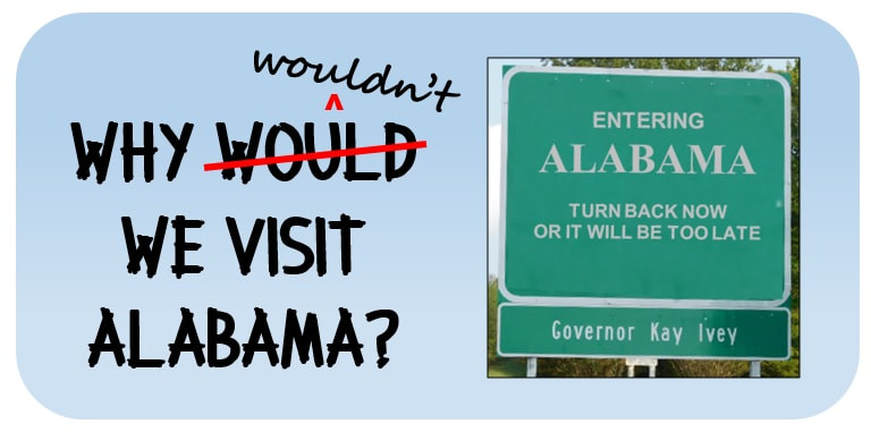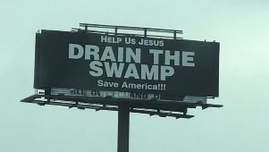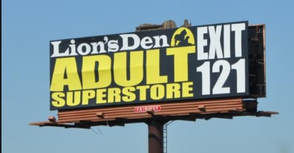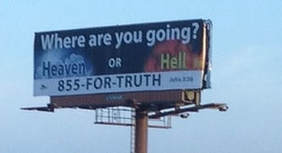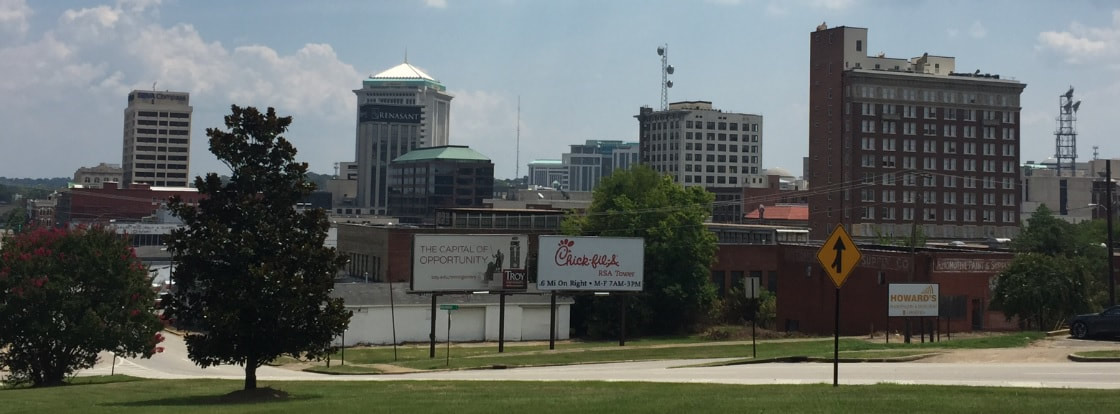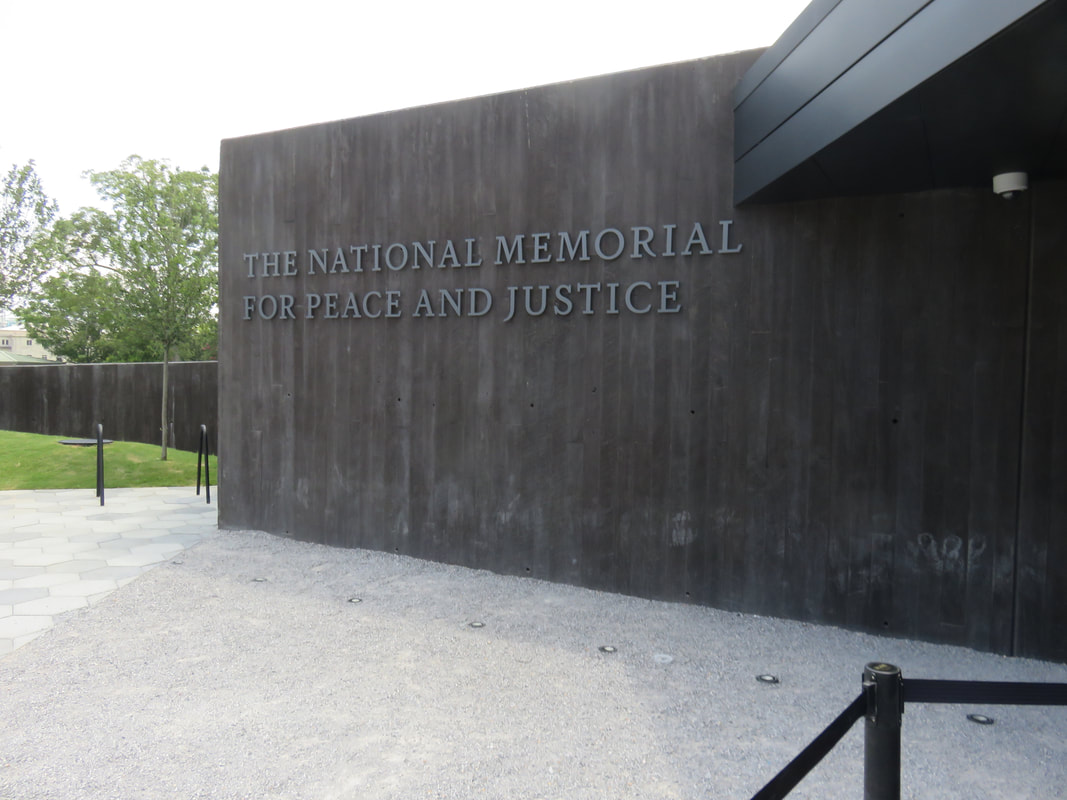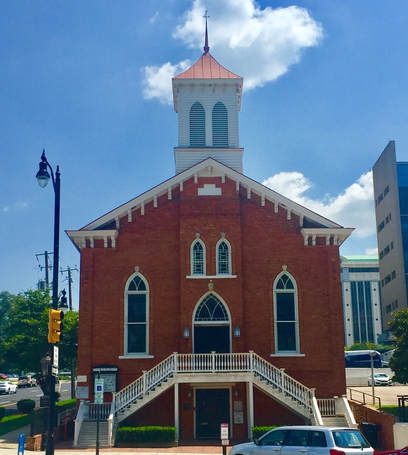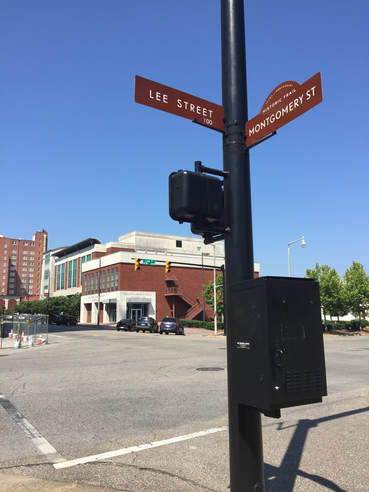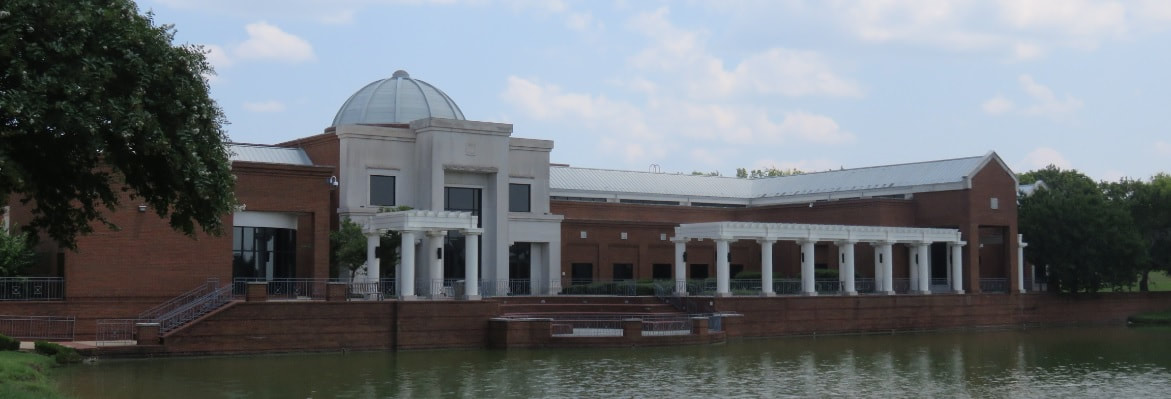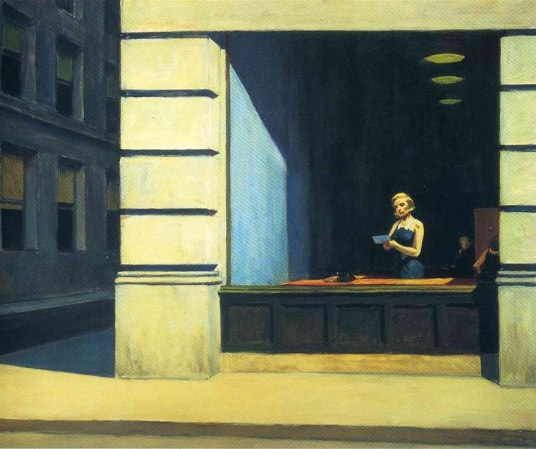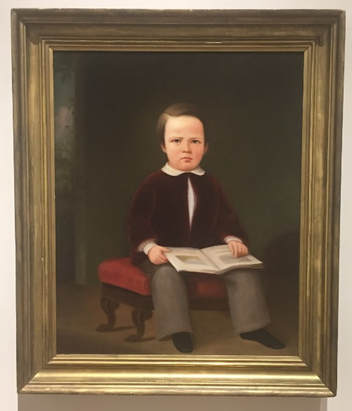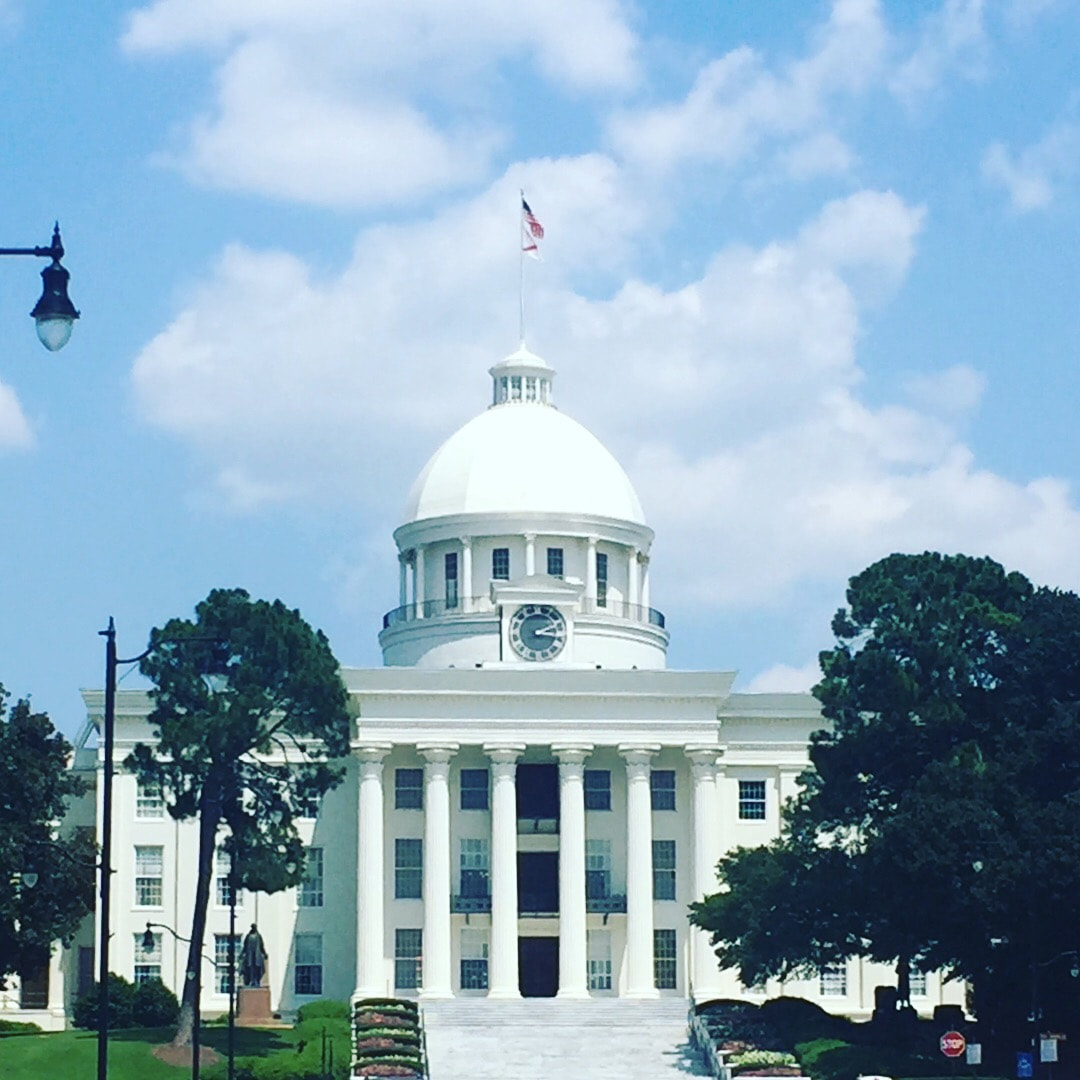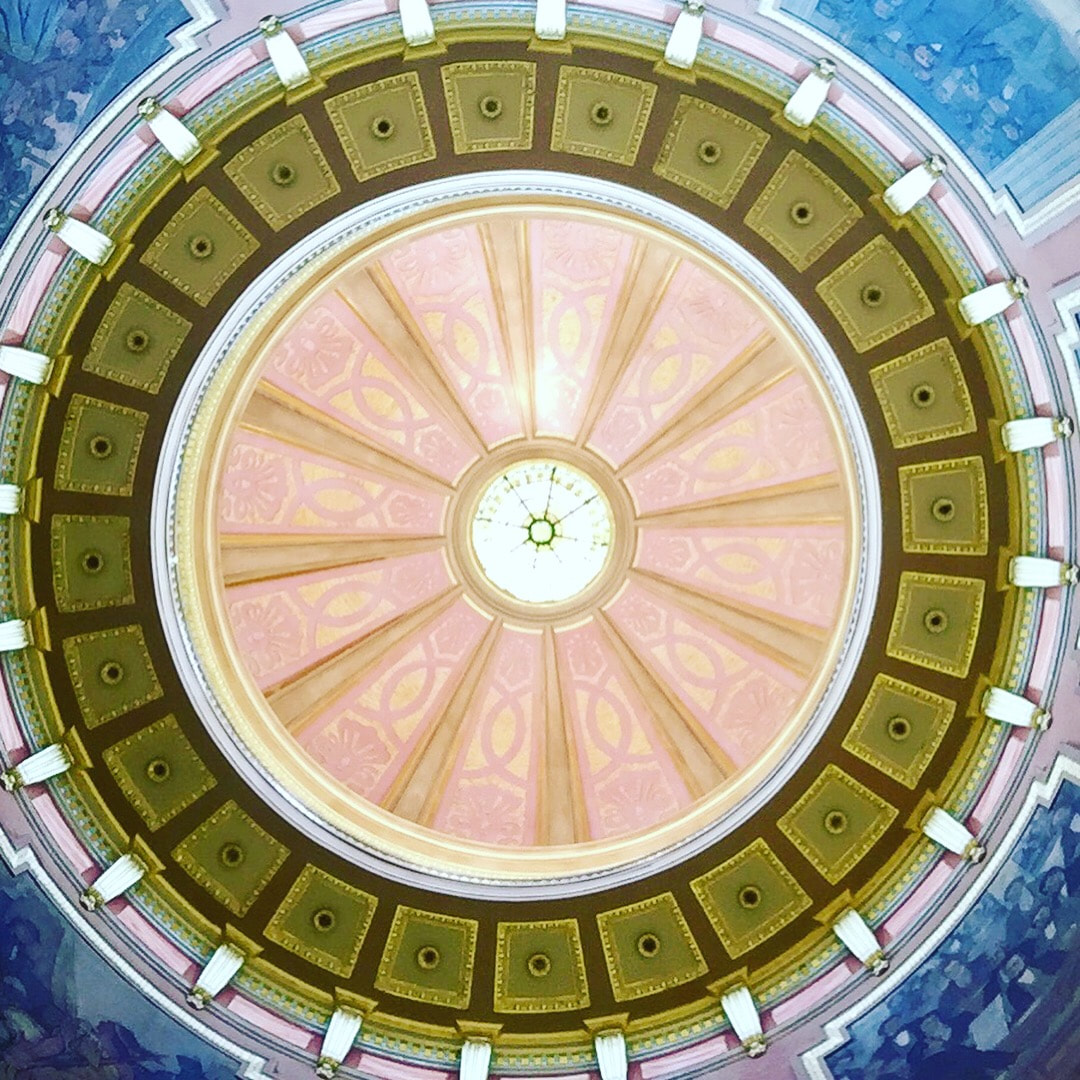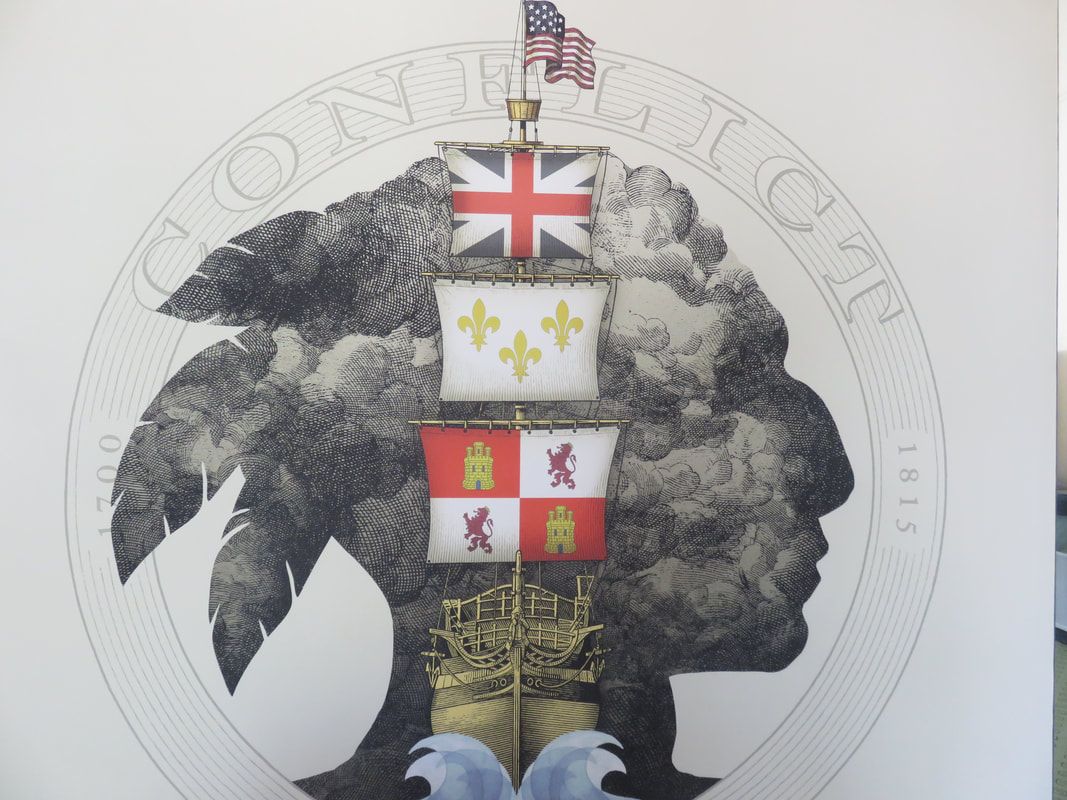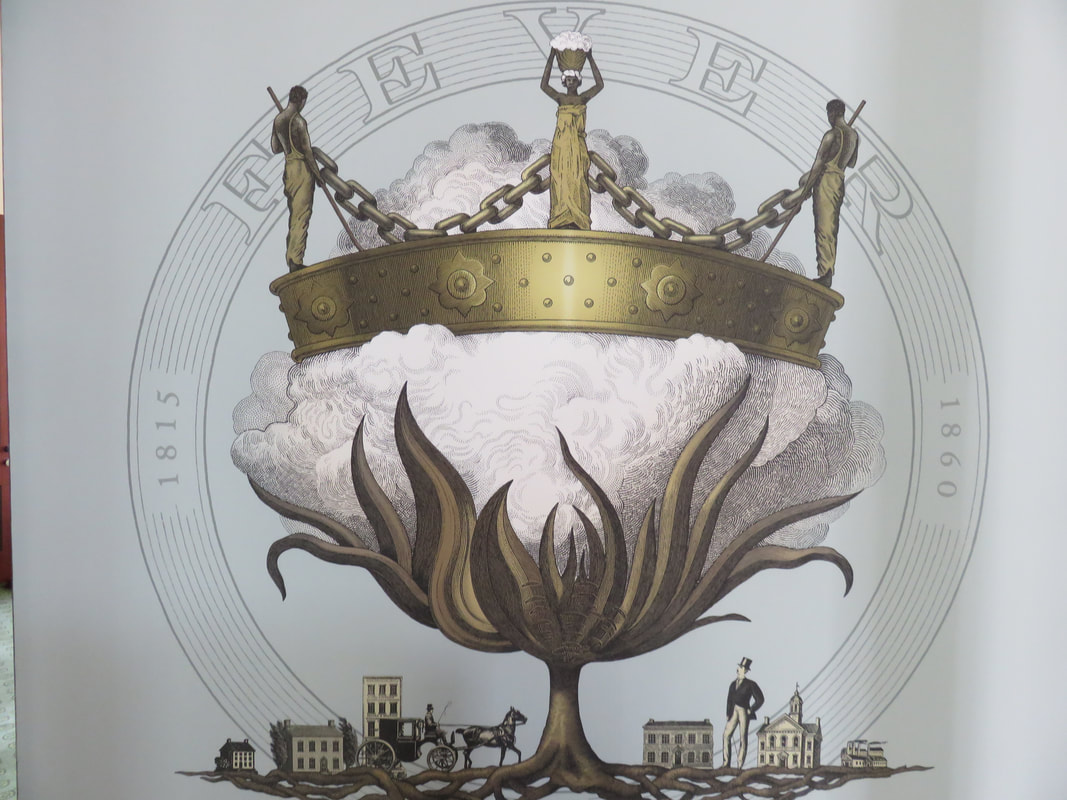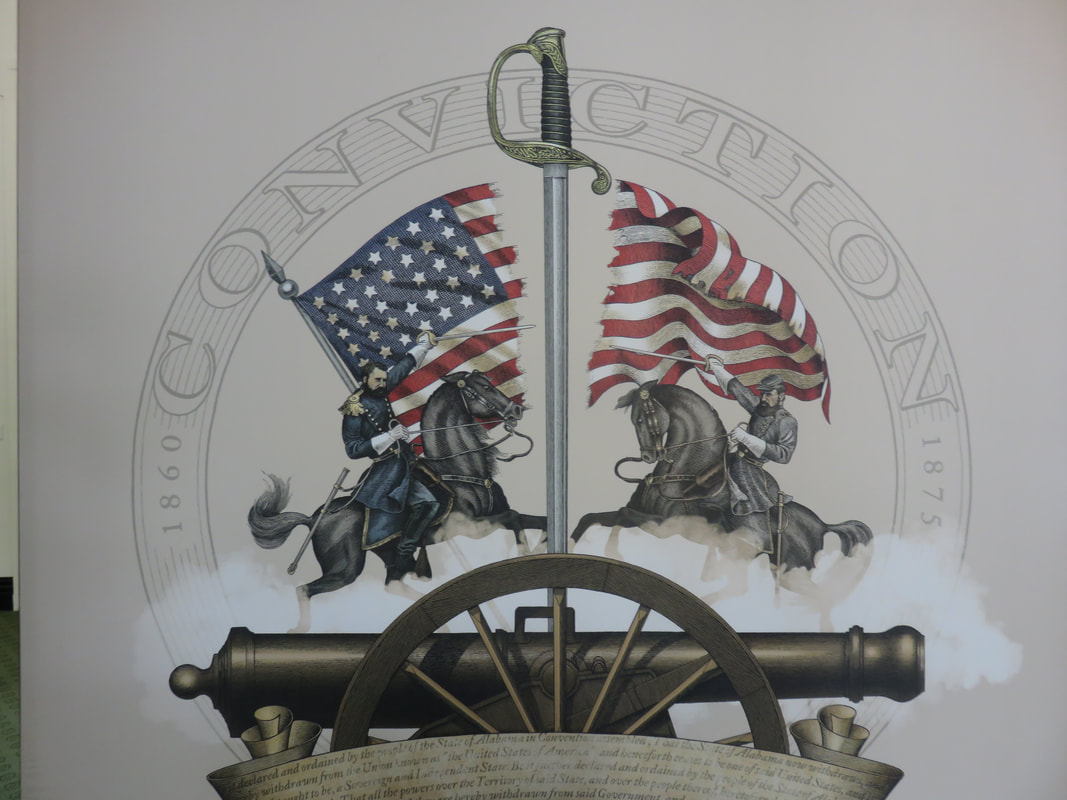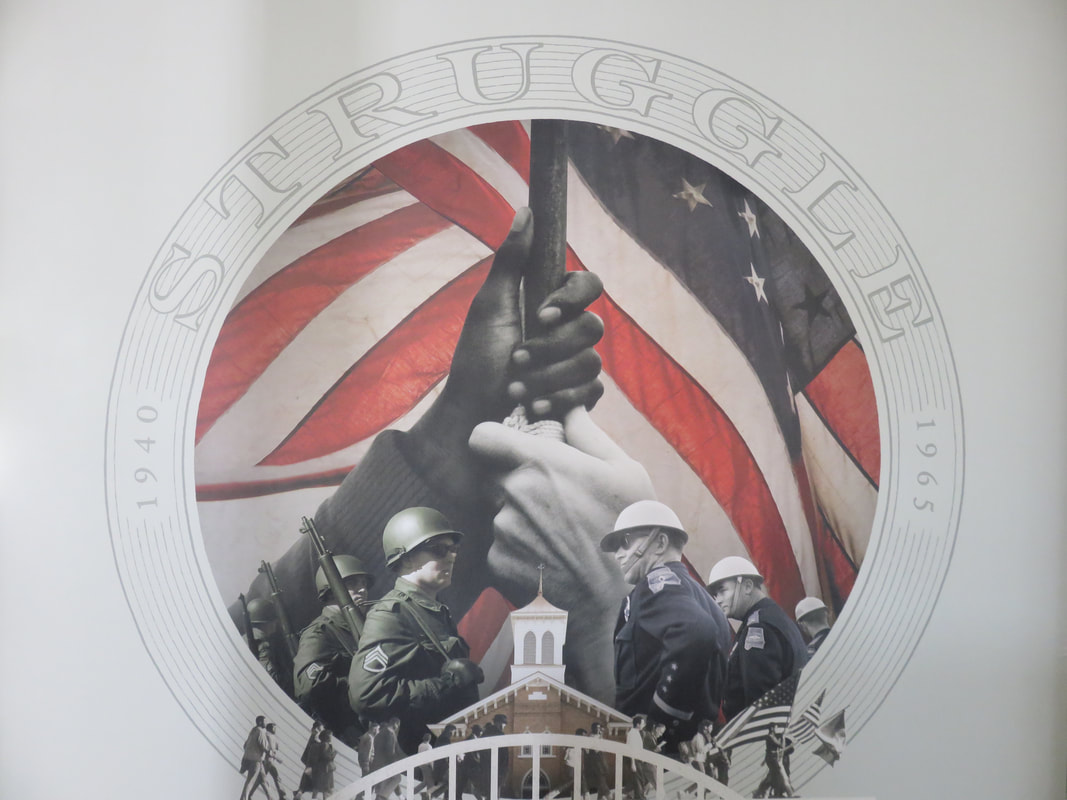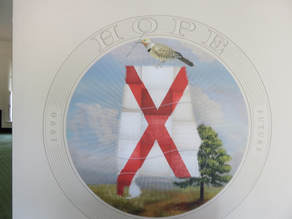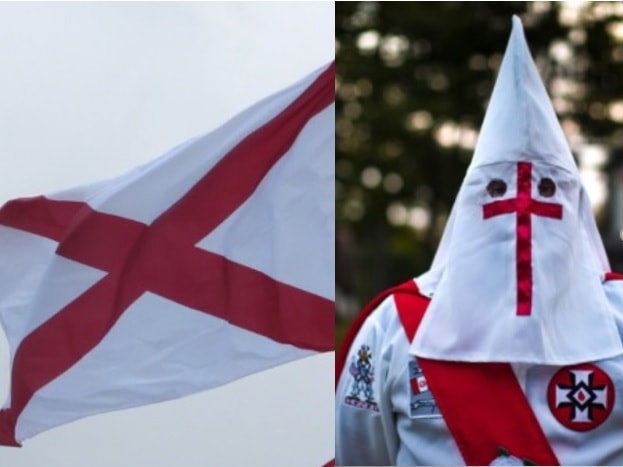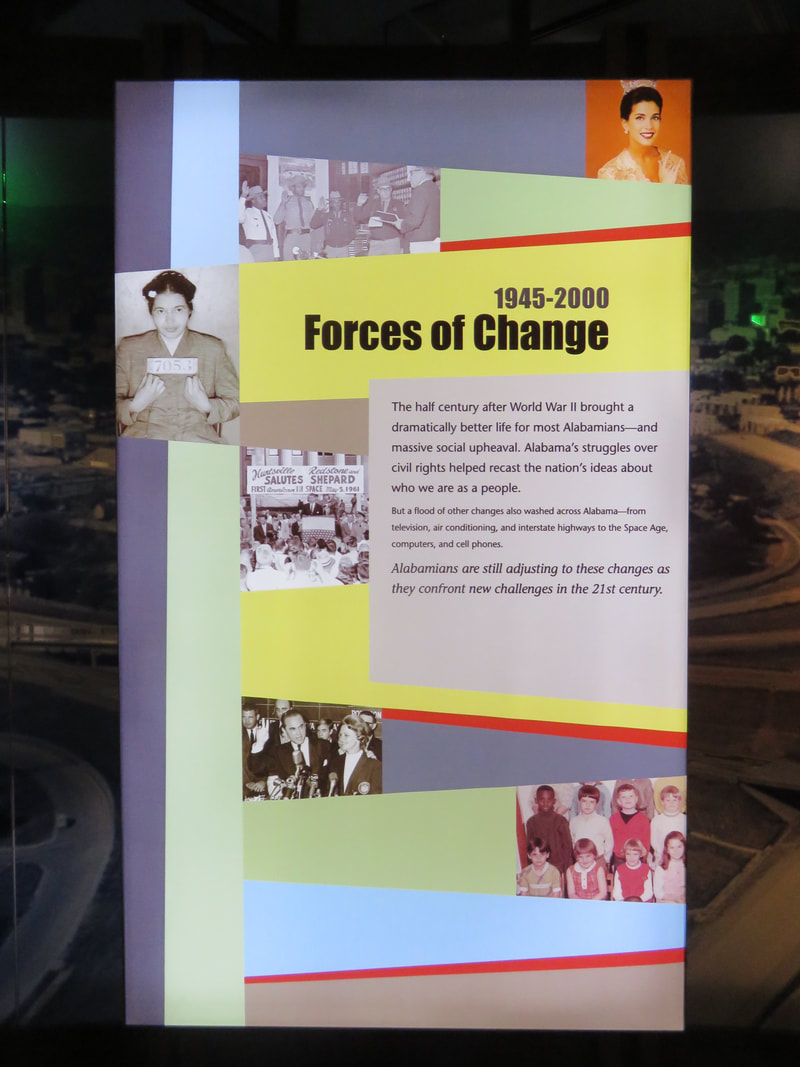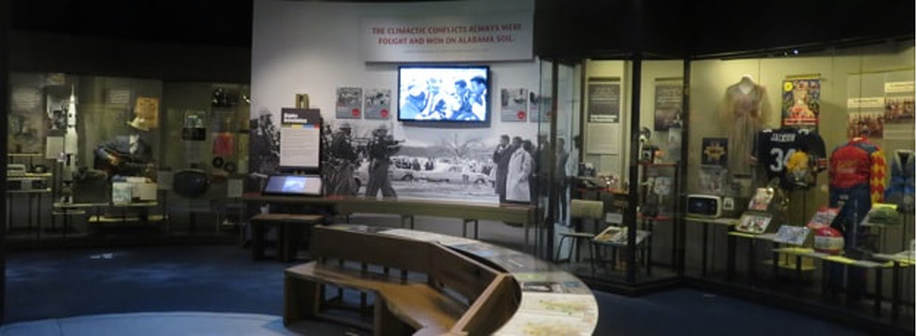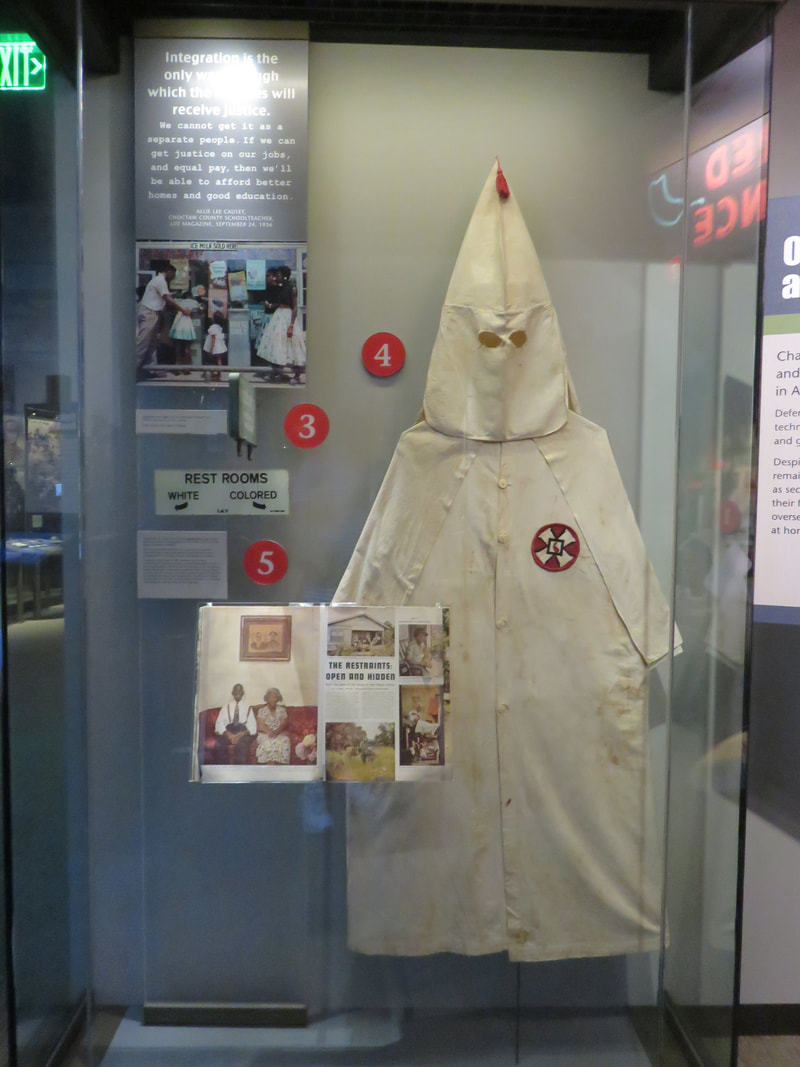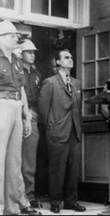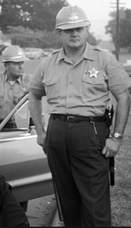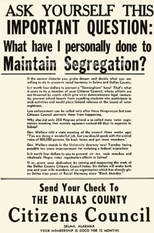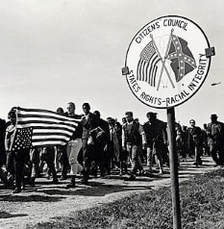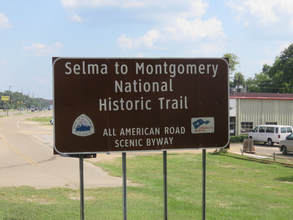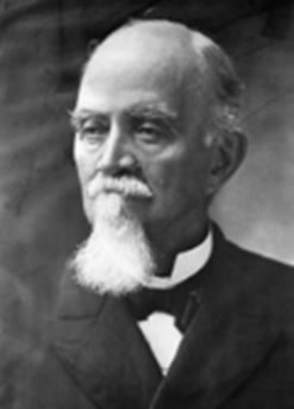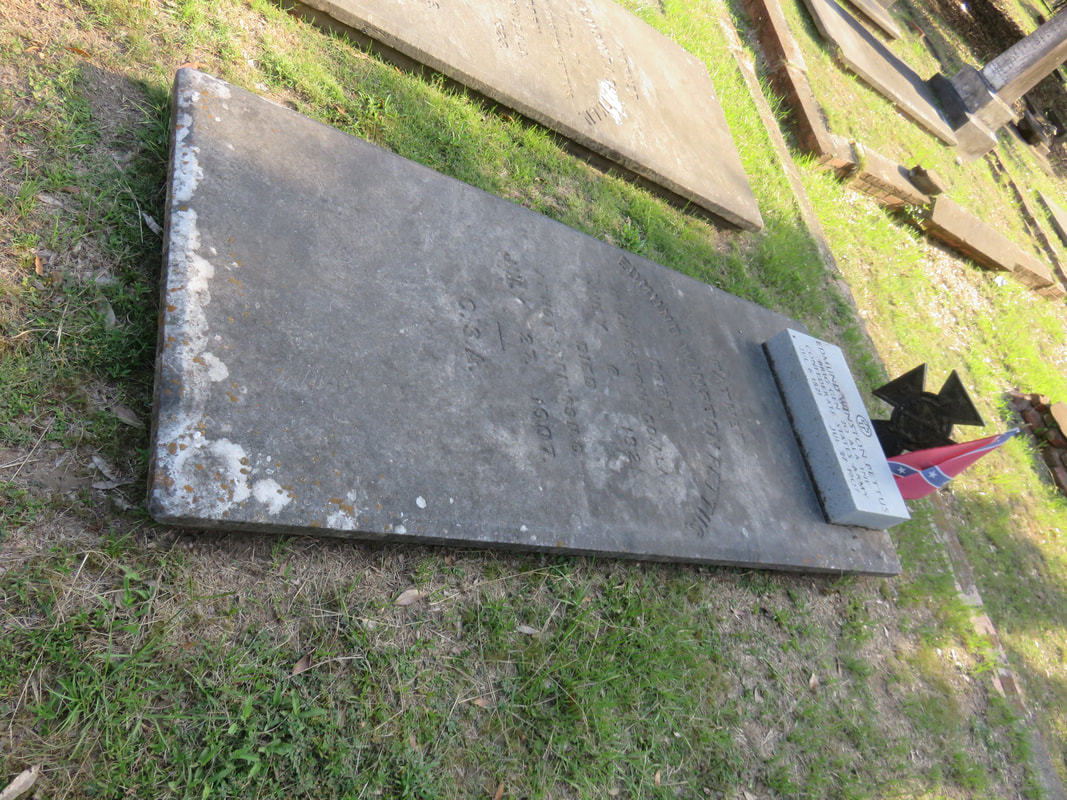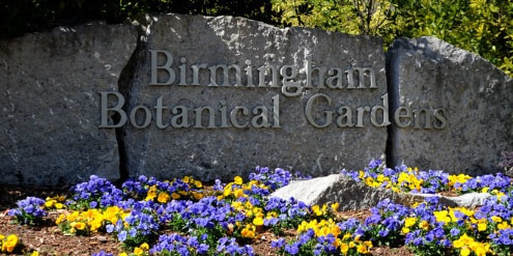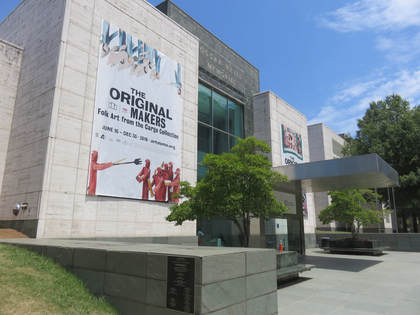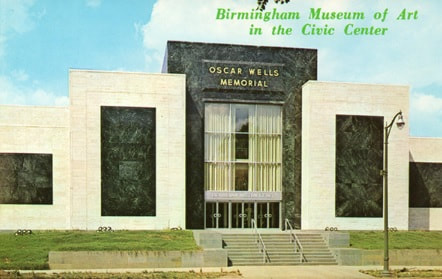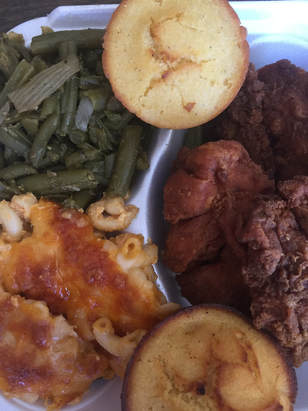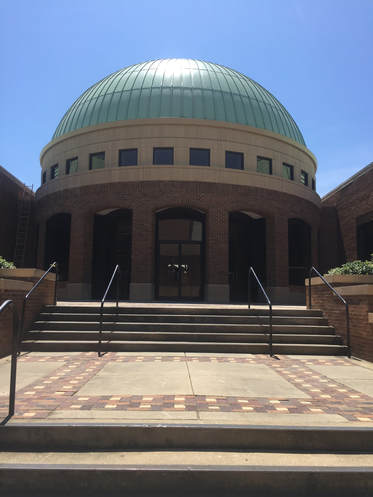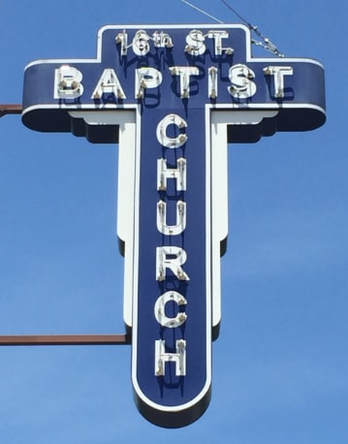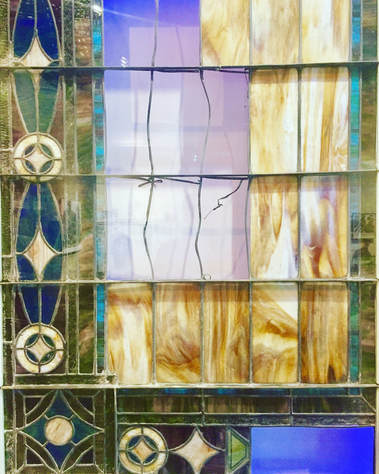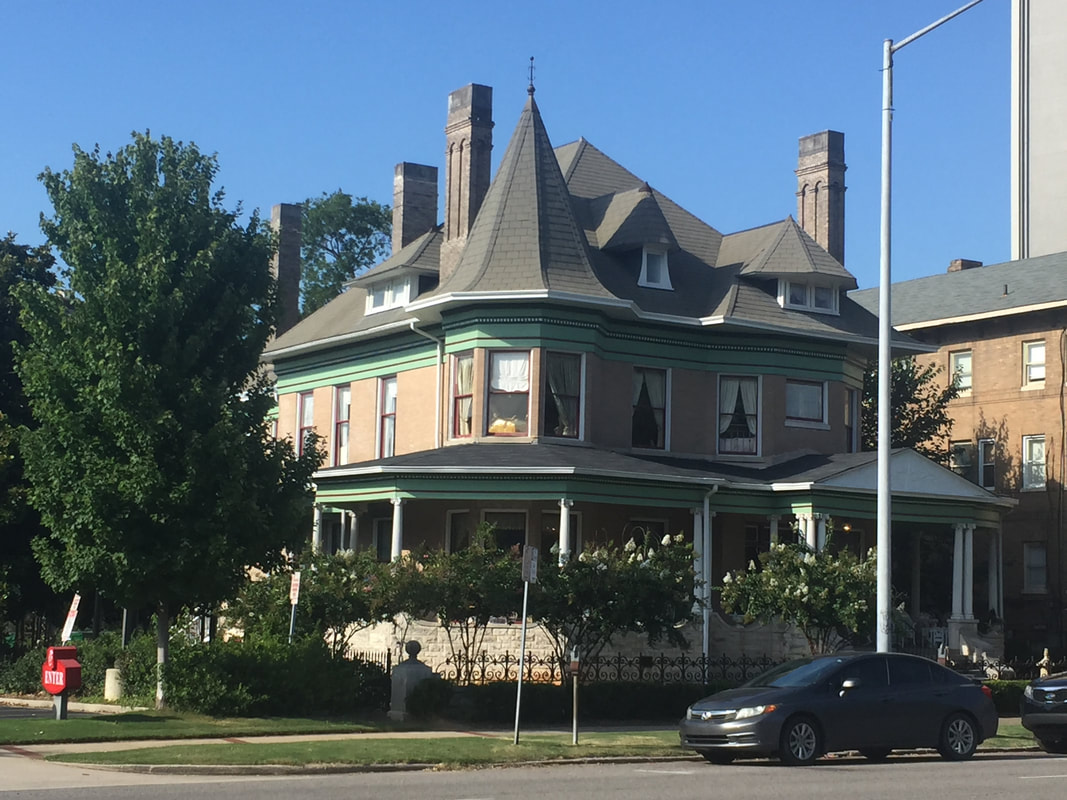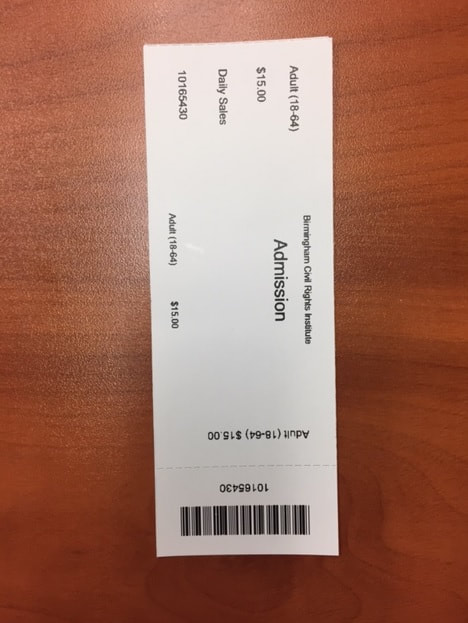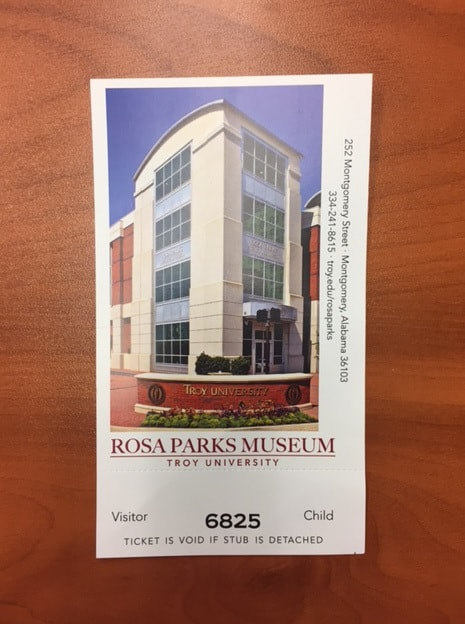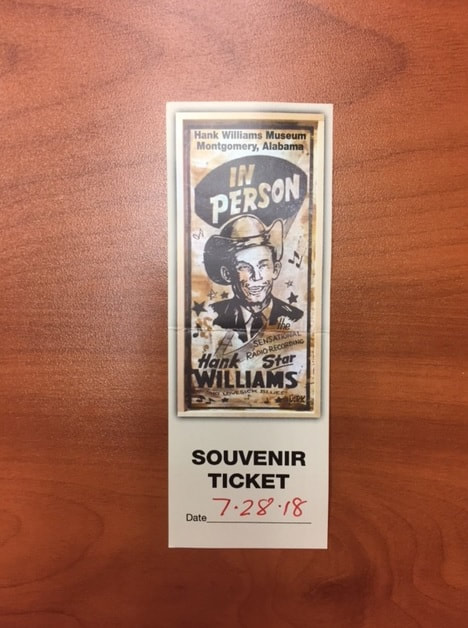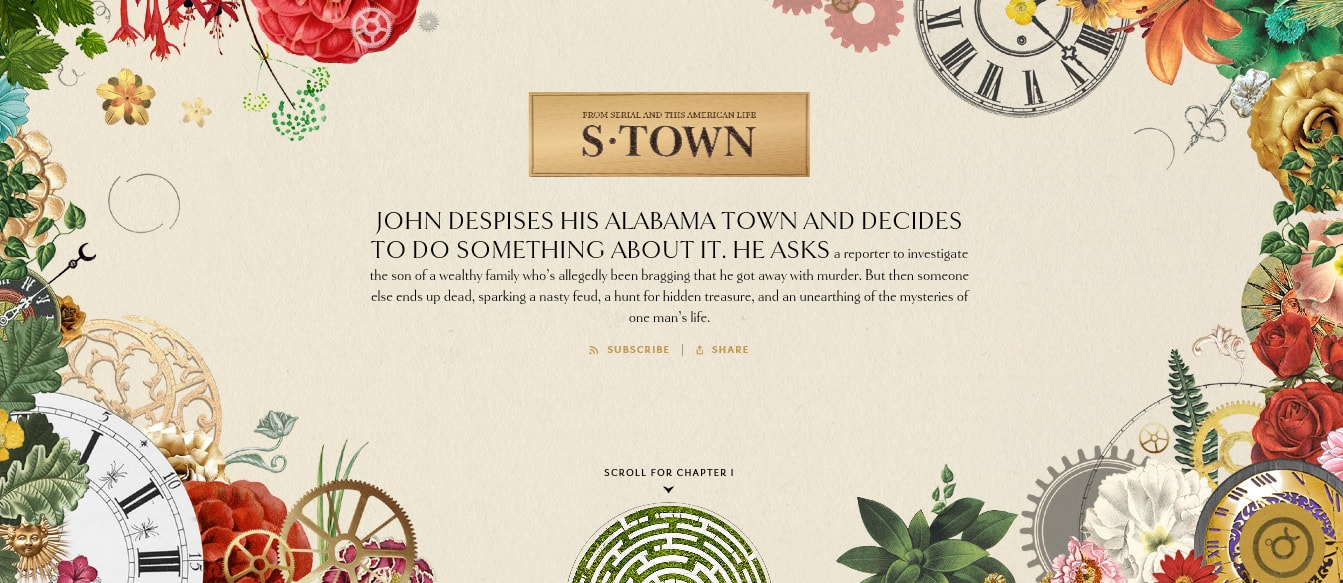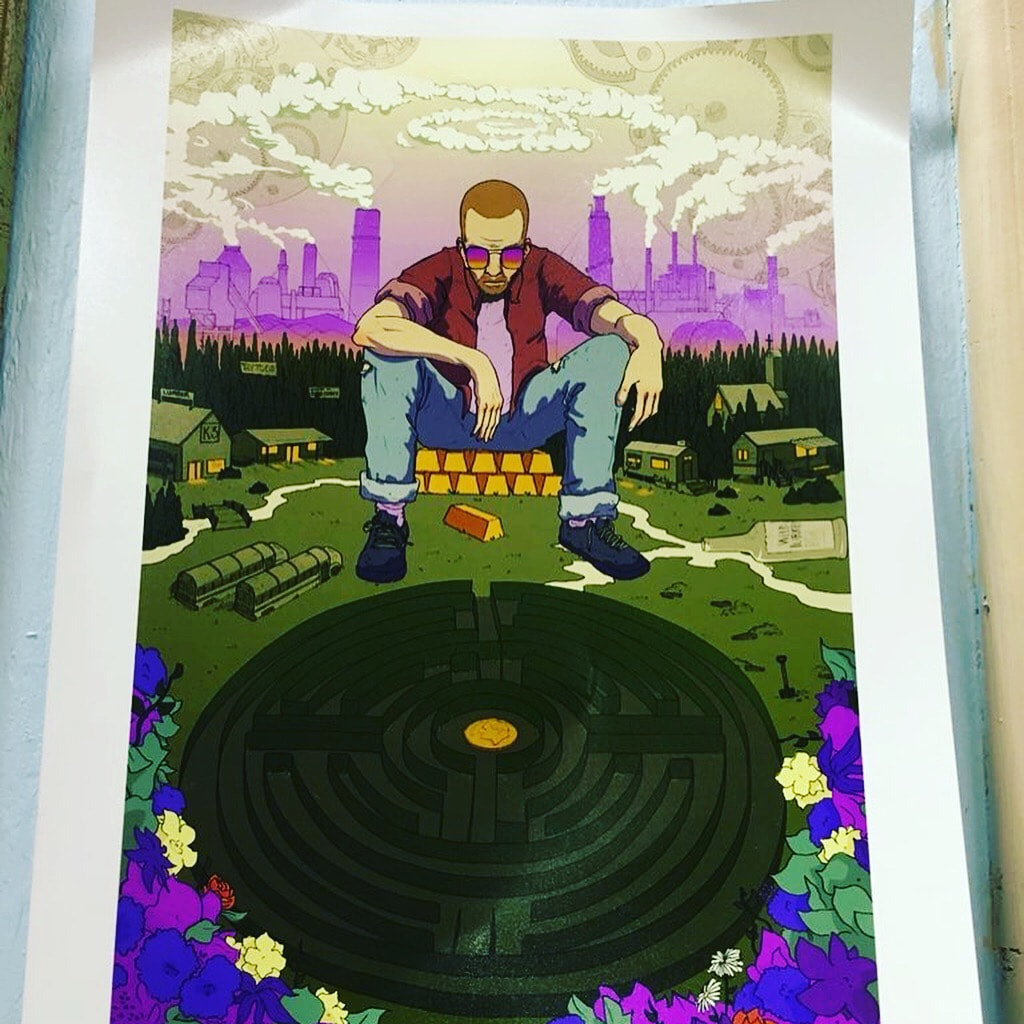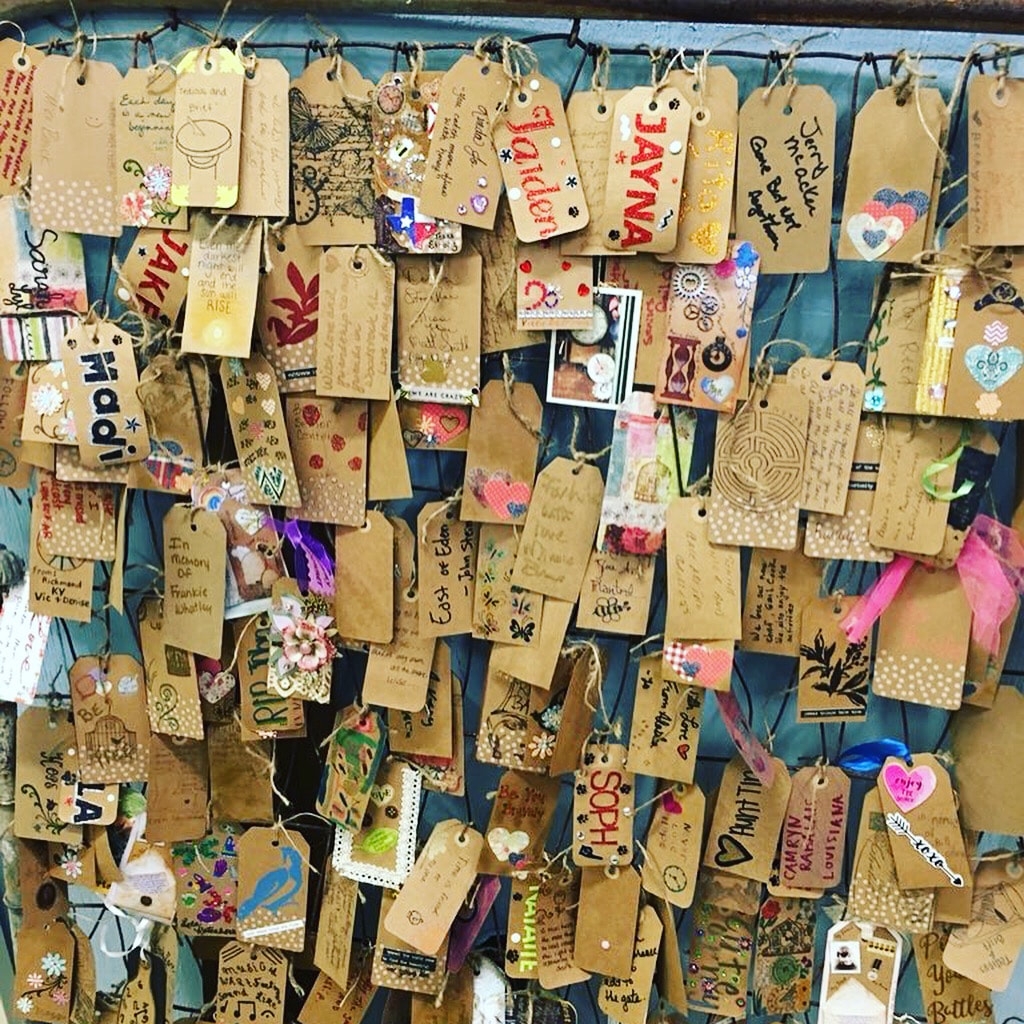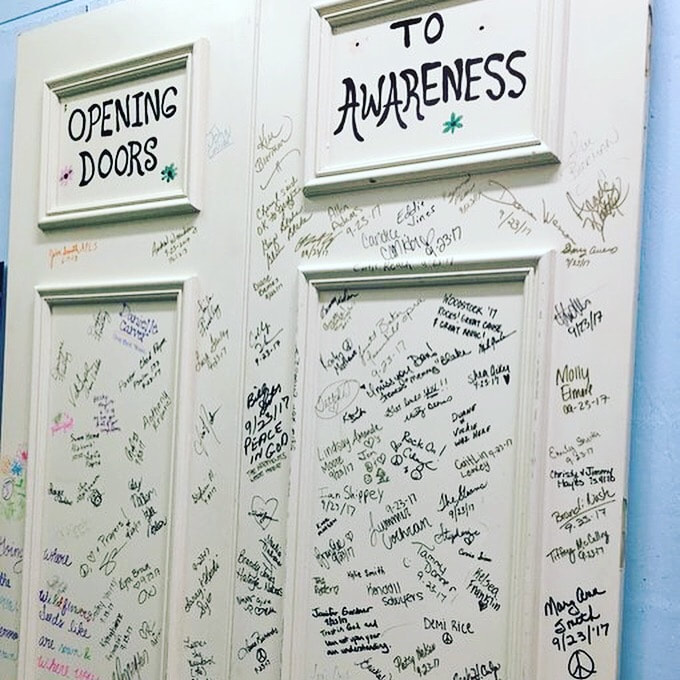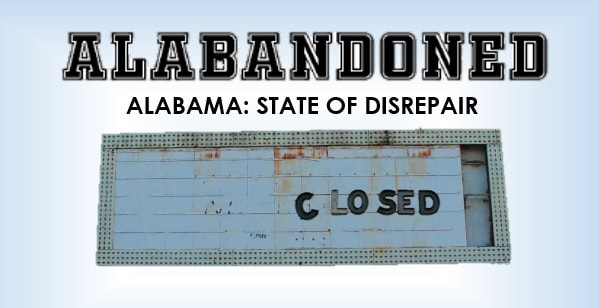Donald Trump's laughable excuse for his shocking performance on the world stage in Helsinki -- centered on the contraction "wouldn't" -- drove us to develop our banner below:
Most of us have never been to Alabama -- it's always seemed to be a pretty scary place. The state's history is filled with plenty of dark moments and quite an ugly past -- so why would we visit Alabama?
Well, we suspect there are some decent folks there trying to change the place for the better. Plus, we've heard quite a bit about the new National Memorial for Peace and Justice, so we -- a group from the members of the Dickinson Organization of Poetry Enthusiasts -- thought it'd be cool to take a road trip to visit some of the civil rights sites and memorials in Montgomery, Selma, and Birmingham. After all, Emmett Lee Dickinson (Emily Dickinson's third cousin, twice removed -- at her request) was a firm believer and a staunch supporter of equal rights.
JULY 27, 2018
We're on the way! A small group of DOPEs (Dickinson Organization of Poetry Enthusiasts) hit the road for Alabama! A few random thoughts about our trip south:
** From Pennsylvania to Georgia, we did not see any confederate flags flapping along the highway, and we expected to see some. We passed by southern cities (Knoxville, Chattanooga, etc.), rural towns, isolated homes, businesses, and farms, and we really thought we'd see at least an occasion rebel flag -- but no. Not a single one.
** We did see a few crazy religious and "adult" billboards, but we expected more.
Below left: "Help Us Jesus / DRAIN THE SWAMP / Save America." Of course, we suspect the irony of this sign is completely lost on those who erected it -- that they worship a Swamp King who's done nothing but muddy the swamp with incompetent and/or corrupt swamp critters. Plus, the Swamp King himself is one who mocks the disabled, tears apsrt families, cages children, lies without batting an eye, grabs women by the...whatever, employs a "fixer," pays hush money to cover up affairs and crimes, admires dictators, vilifies the press, supports white supremacy groups, and so on.
Below center: "Lion's Den Adult Superstore." We only saw a handful of this type of sign, and we expected more. Years ago on a trip through North Carolina, the state seemed to be filled with religious billboards and sex shop/strip club billboards, so we really thought we'd see more of this type of billboard as we headed south.
Below right: "Where are you going? Heaven or Hell." Really?
We're on the way! A small group of DOPEs (Dickinson Organization of Poetry Enthusiasts) hit the road for Alabama! A few random thoughts about our trip south:
** From Pennsylvania to Georgia, we did not see any confederate flags flapping along the highway, and we expected to see some. We passed by southern cities (Knoxville, Chattanooga, etc.), rural towns, isolated homes, businesses, and farms, and we really thought we'd see at least an occasion rebel flag -- but no. Not a single one.
** We did see a few crazy religious and "adult" billboards, but we expected more.
Below left: "Help Us Jesus / DRAIN THE SWAMP / Save America." Of course, we suspect the irony of this sign is completely lost on those who erected it -- that they worship a Swamp King who's done nothing but muddy the swamp with incompetent and/or corrupt swamp critters. Plus, the Swamp King himself is one who mocks the disabled, tears apsrt families, cages children, lies without batting an eye, grabs women by the...whatever, employs a "fixer," pays hush money to cover up affairs and crimes, admires dictators, vilifies the press, supports white supremacy groups, and so on.
Below center: "Lion's Den Adult Superstore." We only saw a handful of this type of sign, and we expected more. Years ago on a trip through North Carolina, the state seemed to be filled with religious billboards and sex shop/strip club billboards, so we really thought we'd see more of this type of billboard as we headed south.
Below right: "Where are you going? Heaven or Hell." Really?
** We were also surprised by how many different minorities we encountered along the way, especially people of Middle Eastern descent. Since we're on a trip to visit civil rights sites, we wondered just how much discrimination and bigotry these people face in the south -- and really, any where in the country -- now that the Swamp King has lit the GOP's "Thousand Points of Light" with tiki-torches.
JULY 28 & 29, 2018
|
The Montgomery Visitors' Center
|
The Legacy Museum (no photography was allowed inside)
|
Founded by Montgomery's Equal Justice Initiative as a counterpart to the National Memorial to Peace and Justice (below), the Legacy Museum (above right) documents slavery and racism in America from enslavement to mass incarceration. Why? “EJI believes that publicly confronting the truth about our history is the first step towards recovery and reconciliation.” For more on the Legacy Museum, scroll down to our discussion of an exhibit in the Department of Archives and History.
The National Memorial for Peace & Justice
From the memorials website (HERE): "The National Memorial for Peace and Justice, which opened to the public on April 26, 2018, is the nation’s first memorial dedicated to the legacy of enslaved black people, people terrorized by lynching, African Americans humiliated by racial segregation and Jim Crow, and people of color burdened with contemporary presumptions of guilt and police violence."
Coming soon: Our thoughts and perspectives on the National Memorial for Peace & Justice.
|
|
|
|
The Rosa Parks Museum & Library
Rosa Parks was arrested at the corner of Montgomery & Lee in front of the Empire Theatre. By coincidence, the Empire Theatre was where Hank Williams won a talent show that started his career in country music. The theatre was later demolished, and the Rosa Parks Museum & Library occupies that corner now. FYI: No photography was allowed inside the museum.
|
The Rosa Parks Museum presents Ms. Parks' arrest in a very inspired and original way with a video projection playing on a vintage bus from Montgomery's bus fleet. Following the depcition of her arrest, visitors enter displays where historically significant artifacts are presented including the original fingerprint arrest record of Mrs. Parks, original works of art, court documents, police reports, and more.
When one enters the museum, there is an issue of the Montgomery Advertiser on display, and it is interesting to read it and note how the white-controlled newspaper reported the events of the day. They referred to African-Americans who supported the boycott as "goon squads," and they even altered the story of Ms. Parks' arrest to suggest that she merely refused to accept an alternative seat assignment (from the article: "Rosa Parks...who refused to accept an assigned seat."). This is an example of how those in power write our history, and they write our history as they would like us to read and interpret it.
When one enters the museum, there is an issue of the Montgomery Advertiser on display, and it is interesting to read it and note how the white-controlled newspaper reported the events of the day. They referred to African-Americans who supported the boycott as "goon squads," and they even altered the story of Ms. Parks' arrest to suggest that she merely refused to accept an alternative seat assignment (from the article: "Rosa Parks...who refused to accept an assigned seat."). This is an example of how those in power write our history, and they write our history as they would like us to read and interpret it.
The Montgomery Museum of Art
What brought us to the Montgomery Museum of Fine Art? Edward Hopper's "New York Office" (below left). We visit any museum that has a Hopper because of Hopper's connection to poet Emmett Lee Dickinson (Emily Dickinson's third cousin, twice removed --at her request). Info on Hopper's connection to Dickinson can be found HERE -- and also check the archives to our plog (poetry blog).
Below left: Some of the American Art collection at the MMFA. Below right: We were delighted to see a painting of a young boy reading a first edition of Emmett Lee Dickinson's poetry.
|
The Alabama State Capitol We took a self guided tour of the state capitol, and it was certainly very beautiful. However, some of us did have a bit of an issue with something that was part of a display on the state's history.
We discuss it below -- related to the emblems used in the exhibition -- so take a look and see if you agree. |
|
|
|
Here was the problem: In a former chamber of the state's Supreme Court, there is an exhibit on the state's history where various time periods are represented by beautifully illustrated emblems. For example, the three emblems below represent the earliest history of the state, the "King Cotton" years, and the Civil War. Below that on the left is an emblem for the years surrounding the two World Wars, and to the right of that, the emblem used to represent the future of the state. The future? Some in our group gasped at this depiction at first because they thought it looked like the state of Alabama was shrouded in a Ku Klux Klan hood (as seen on the far right). To be honest, throughout our visit, we kept thinking we were seeing a symbol of the Klan, and it would just turn out to be the Alabama state flag.
Just a thought: maybe the state should come up with a new design for their flag? Something that would, in fact, represent a future separated from a bigoted past? Their own museum displays discussed how the South's view of slavery morphed from a "necessary evil" to a venerated institution, an institution that took root, grew strong, and had to be protected at all costs. Those who revere the Confederate past and proclaim "heritage, not hate" simply can't see the forest for the family trees.
Just a thought: maybe the state should come up with a new design for their flag? Something that would, in fact, represent a future separated from a bigoted past? Their own museum displays discussed how the South's view of slavery morphed from a "necessary evil" to a venerated institution, an institution that took root, grew strong, and had to be protected at all costs. Those who revere the Confederate past and proclaim "heritage, not hate" simply can't see the forest for the family trees.
Alabama Department of Archives and History
|
|
|
|
We were very surprised and disappointed by the Alabama Department of Archives and History's handling of Civil Rights events in the state’s history in a very superficial display as part of their “Voices of Alabama" exhibit. The museum seemed to gloss over the Jim Crow era and the major Civil Rights campaigns, marches and protests from the 1960s. Here’s what we’re talking about: This panel on the right introduces the portion of the exhibit that includes the Civil Rights movement. First, this entire segment of the exhibit – from 1945 to 2000 – is much too broad. Second, don’t you think – given the disturbing history of the time – that it looks a little too cheerful? Yes, there is a picture of Rosa Parks on the display, but is that a beauty queen in the top right corner? Next, there is VERY LITTLE mention of the entire Civil Rights movement – aside from ONE panel in the middle of the display (in the picture below) that depicts state troopers advancing toward marchers in Selma – and that panel is surrounded by Hank Williams memorabilia on the left and college souvenirs and mementos on the right. Seriously? |
|
Finally, there is a display that includes a Ku Klux Klan robe – but museum-goers don’t even see it as they enter the exhibit. No, the robe is hung in a panel around the corner from the viewers, and they walk right past it unless they happen to turn around and look behind them. Personally, we found this shallow, lightweight coverage of some of our country’s most momentous events from the twentieth century to be disturbing – very unlike the raw, courageous, and hard-hitting attention Alabama’s history received from the Legacy Museum. The Legacy Museum gave considerable and palpable coverage to the profound legacy of Alabama’s (and the country’s) horrible and heartbreaking heritage, and it gave substantial weight to the idea that people who defend the Confederate flag with their glib “It’s about heritage, not hate,” either don’t know or don’t care that the very heritage they celebrate is rooted deeply in hate. |
|
The F. Scott & Zelda Fitzgerald House,
The Hank Williams Museum, & Chris' Hotdogs Before we departed for Selma, we stopped by a few fun spots in Montgomery.
Right: The Fitzgerald home -- where F. Scoot Fitzgerald lived in 1931/1932 and worked on "Tender Is the Night" -- was closed for a private event, so all I was able to photograph was the house (now divided into four apartments, the mailboxes, and a bit of torn wallpaper. Below left: No photographs were allowed in the Hank Williams Museum, but it was filled from wall to wall and from ceiling to floor with Williams' memorabilia. Below right: For lunch we stopped at Chris' hotdogs, Montgomery's oldest family-run restaurant and a favorite of Hank Williams. |
|
|
|
|
|
Pictured at the right: Miscellaneous pictures from Montgomery. We departed Montgomery for Selma following lunch at Chris' Hotdogs. We had a wonderful time in Montgomery -- there was certainly more to see and do than we ever expected. However, it seemed to us that certain institutions (the Equal Justice Initiative, the Legacy Museum, the Roas Parks Museum and LIbrary, etc.) wanted to examine the full history of the south's and Alabama's past to examine "how we got here" today -- the cause and the effect of slavery as an institution. On the other hand, other organizations (the state capitol, the Alabama Department of Archives and History, etc.) seemed to want to gloss over the state's dark past and it's legacy of racism. They included only very cursory examinations of the state's past and current condition. |
|
Prior to the Jim Crow era, the heritage of Alabama and the south was rooted in slavery. Enslavement of Africans was, in the early days, seen as a "necessary evil," but it soon became established as a crucial institution, a fundamental support of the south's economy and wealth. Later, this "established institution" evolved into an underpinning of white society's ethics and values.
Below: We are sure that on the surface, white people in Alabama in the 1960s looked like normal people who went to schools, jobs, churches, picnics, dances, grocery stores, and so on. However, concerning issues like equality, racial equity, and desegregation, many of the people had warped and dangerous views on maintaining segregation and protecting "racial integrity." The heritage of the south created a legacy of bigoted, racist people who fought hard to keep the races separate, depicted in the photographs of the people below. There were even white "Citizen's Councils" made up of people who marched for "states' rights" and "racial integrity" (it's no mystery that those who profess "heritage, not hate" about the confederacy are the same people who declare that the Civil War was all about "states' rights"). These white racists in the 1960s were the legacy of the heritage of the early south.
Below center: Check out the video "1960s Special Report: Who Speaks for Birmingham." Interviews start at 8:55. The man at 10:22, and the woman at 12:25 are NOT to be missed!
Below: We are sure that on the surface, white people in Alabama in the 1960s looked like normal people who went to schools, jobs, churches, picnics, dances, grocery stores, and so on. However, concerning issues like equality, racial equity, and desegregation, many of the people had warped and dangerous views on maintaining segregation and protecting "racial integrity." The heritage of the south created a legacy of bigoted, racist people who fought hard to keep the races separate, depicted in the photographs of the people below. There were even white "Citizen's Councils" made up of people who marched for "states' rights" and "racial integrity" (it's no mystery that those who profess "heritage, not hate" about the confederacy are the same people who declare that the Civil War was all about "states' rights"). These white racists in the 1960s were the legacy of the heritage of the early south.
Below center: Check out the video "1960s Special Report: Who Speaks for Birmingham." Interviews start at 8:55. The man at 10:22, and the woman at 12:25 are NOT to be missed!
|
|
Pictured at the left: Just as the racist whites of the 1960s were the legacy of the south's heritage that preceded them, a later generation of bigoted whites is the legacy of the heritage of the south of the 1960s -- and they, too, are leaving their own legacy on today's society (right). |
|
JULY 29, 2018
Our first impressions of Selma: The architecture looked more like a town out west -- almost like the old buildings of Cheyenne, Wyoming -- and It was something of a ghost town. We were surprised by the countless number of abandoned, deteriorating and/or boarded up buildings and houses. Everywhere we drove, we saw vacant businesses, schools, day care centers, churches, motels, restaurants, home, apartments buildings, and more. It was more than a bit depressing.
Our first impressions of Selma: The architecture looked more like a town out west -- almost like the old buildings of Cheyenne, Wyoming -- and It was something of a ghost town. We were surprised by the countless number of abandoned, deteriorating and/or boarded up buildings and houses. Everywhere we drove, we saw vacant businesses, schools, day care centers, churches, motels, restaurants, home, apartments buildings, and more. It was more than a bit depressing.
Selma to Montgomery Trail: Lowndes Interpretive Center
Of course Selma is best known for "Bloody Sunday" and the Selma to Montgomery March which were part of the 1960s Selma Voting Rights Movement – and interestingly enough, it was an issue surrounding a vote that brought our group to Alabama in the first place.
To be honest, most of us never thought about traveling to Alabama. To most in our group, Alabama was a scary place with a dark past rooted in racism and hatred. However, when 50% of the voters in the most recent election put Doug Jones in the US Senate, we realized that there were many fine people working hard to do the right thing and improve the image of the state (although every member of our group still finds it unconscionable that 49% of the voters cast ballots for Roy Moore).
Edmund Pettus Bridge
Above left: Edmund Pettus represented Alabama in the US Senate from 1897 to 1907. He previously served as a senior officer of the Confederate States Army who commanded infantry in the Western Theater of the Civil War. After the war, he was politically active in the Ku Klux Klan.
Below: The Edmund Pettus Bridge in Selma, site of "Bloody Sunday" and the starting point for the later march to Montgomery.
Below: The Edmund Pettus Bridge in Selma, site of "Bloody Sunday" and the starting point for the later march to Montgomery.
|
Selma Interpretive Center
|
Brown Chapel AME Church
|
Old Live Oak Cemetery
Left: Resting place of William Rufus de Vane King (Vice President of the United States).
Right: Grave of Edmund Pettus (Grand Dragon of the Ku Klux Klan).
Left: Resting place of William Rufus de Vane King (Vice President of the United States).
Right: Grave of Edmund Pettus (Grand Dragon of the Ku Klux Klan).
Miscellaneous Pictures from Selma
|
|
|
JULY 30, 2018
We arrived in Birmingham on a Sunday. Since the Civil Rights Institute did not open until 1:00 p.m., we first strolled through the Birmingham Botanical Gardens, and then we visited the Birmingham Museum of Art.
|
|
|
Mrs. B's
Birmingham was not a vibrant city in that people don't live in the city. Instead, Birminghamians commute in for work, and then they commute home for dinner (or is it "supper" in the south?), leaving the city a virtual ghost town. As a result, streets were quiet and empty, and almost all businesses were closed -- and we were starving! Before entering the Civil Rights Institute, we asked the security guard on duty if there was any nearby place to grab a quick lunch.
"Well, on a Sunday," she said, "the only place open is Mrs. B's."
Off to Mrs. B's we trekked -- just two blocks away -- and we enjoyed DELICIOUS home cooked meals! Thank you, Mrs. B, for opening on Sundays!
"Well, on a Sunday," she said, "the only place open is Mrs. B's."
Off to Mrs. B's we trekked -- just two blocks away -- and we enjoyed DELICIOUS home cooked meals! Thank you, Mrs. B, for opening on Sundays!
After strolling through Kelly Ingram Park (above right), we loved walking around the downtown area and seeing all of the vintage signage (below left & right).
|
|
|
Mount Vulcan Park
After dinner at Rojo in the Highland Park area of Birmingham, we drove up to Mount Vulcan Park to enjoy views of the city and the sunset.
After dinner at Rojo in the Highland Park area of Birmingham, we drove up to Mount Vulcan Park to enjoy views of the city and the sunset.
|
|
|
Hassinger Daniels Mansion Bed and Breakfast
Throughout our trip to Alabama, we stayed at inexpensive motels. However, on our final night, we stayed at the Hassinger Daniels Mansion B & B -- and we loved it! A wonderful location, a wonderful property and beautifully appointed rooms.
Throughout our trip to Alabama, we stayed at inexpensive motels. However, on our final night, we stayed at the Hassinger Daniels Mansion B & B -- and we loved it! A wonderful location, a wonderful property and beautifully appointed rooms.
|
Just a funny tidbit...
When we entered the Civil Rights Institute in Birmingham, we handed over our tickets (a sample is pictured at the right), and the ticket-taker said, "You can keep your souvenir ticket." Now, the tickets at the center and far right, from the Rosa Parks Museum and the Hank Williams Museum, are souvenir tickets -- but a plain white ticket? No. : ) |
JULY 30, 2018
|
When we planned our trip to Alabama, we had no intention of stopping in Woodstock. As a matter of fact, we didn't know a thing about Woodstock -- or at least we thought we didn't. How wrong we were about that!
Here's the background info on how we ended up in Woodstock: * Prior to our trip, we added this page to our web site (with just the banner and a short introduction), & we tweeted about it (@the_Dickinson). Our first tweet was on July 18th, and it said, "Goin' to Alabama (should we be scared?)" It included a link to this page. * After that tweet, we picked up a follower in Alabama with the name @Woodstock_books, and we followed the account back. |
* Then, as we headed to Alabama on 7/26, one member of the group suggested that we listen to the podcast "S-Town" (HERE). Most in our group had heard it before, but not everyone had.
* Early in the first episode, John B. McLemore, the antiquarian horologist at the center of the story, stated that he lived in Woodstock, Alabama -- or as he called it, S-Town.
* We DM-ed @Woodstock_books immediately: "Listening to S-Town on the way to Alabama...& just realized Woodstock = S-Town???"
* @Woodstock_books replied: "Yes, the one and only."
* @Woodstock_books also sent a few pictures and said they would leave some cards for us in the library's mailbox, so on Sunday on our way to Birmingham, we stopped by Woodstock, picked up the cards, and snapped a few pictures. Before continuing on our way to Birmingham, we visited the library, the Green Pond Presbyterian Church and cemetery, and the Little Caesars.
* Early in the first episode, John B. McLemore, the antiquarian horologist at the center of the story, stated that he lived in Woodstock, Alabama -- or as he called it, S-Town.
* We DM-ed @Woodstock_books immediately: "Listening to S-Town on the way to Alabama...& just realized Woodstock = S-Town???"
* @Woodstock_books replied: "Yes, the one and only."
* @Woodstock_books also sent a few pictures and said they would leave some cards for us in the library's mailbox, so on Sunday on our way to Birmingham, we stopped by Woodstock, picked up the cards, and snapped a few pictures. Before continuing on our way to Birmingham, we visited the library, the Green Pond Presbyterian Church and cemetery, and the Little Caesars.
Pictures from @Woodstock_books: Right: "Fan pic of John." Center: "Tags sent from around the world in honor of John." Right: "John's friend Cheryl started 'Opening Doors to Awareness' suicide prevention project and we host the physical doors."
|
Below: The Woodstock Library |
Below: Scenes nearby the Woodstock Library |
|
Below left: The Green Pond Presbyterian Church Cemetery
|
Below right: Miscellaneous shots around S-town.
|
|
|
More from @Woodstock_books: "There isn't a ton here to see, but the folks are friendly." RE: John B's maze: "Part of the maze died before John did due to drought and then boxwood blight. But the property is private and the folks that own it now have had so many vandals looking for gold that it's in a damaged state in general, so no, it (the maze) is not viewable." Slide show at the left: Pic 1: A memento of S-Town left for us by @Woodstock_books. Thank you, @Woodstock_books, for your kindness, for the photographs & information you shared, and for the keepsakes. Pic 2: Aerial view of John B's house, property & maze. Pic 3: A photograph of the maze from a drone -- and it looks like a number of the bushes have died. |
BE SURE TO CHECK OUT THE COMPANION PAGE TO OUR TRIP:
"ALABANDONED / Alabama: State of Disrepair":
Beauty in the vacant and abandoned buildings of Montgomery, Selma, and Birmingham. Click HERE.
"ALABANDONED / Alabama: State of Disrepair":
Beauty in the vacant and abandoned buildings of Montgomery, Selma, and Birmingham. Click HERE.
